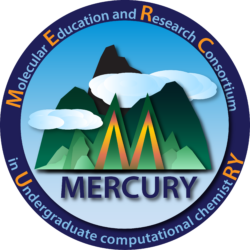MERCURY is delighted to bring these key note speakers to our virtual conference in 2021. To prepare for these seminars, we recommend you read the papers suggested by each speaker below.
Sharani Roy, University of Tennessee
Date and Time: June 4, 1-2pm
Title: Chemistry at the interface of molecules and solids
Abstract: Chemistry at the interface of molecules and solids forms the foundation of a wide range of technologies, such as, heterogeneous catalysis, gas storage, chemical sensing, and solar cells. It determines the fate of a space vehicle as its surface heats up due to high-energy collisions with gaseous atoms and molecules upon re-entry into the earth’s atmosphere. It also governs natural phenomena, such as corrosion and oxidation processes, e.g., the rusting of iron and the weathering of rocks. Even interstellar formation of molecules is thought to occur on the surfaces of dust particles. In all the above examples, the fundamental interactions that govern the processes occur at the interface of individual molecules and the surface of a solid. My research group adopts a bottom-up approach to understanding such phenomena by developing atomistic models of the elementary steps of surface chemistry, such as the scattering, adsorption, diffusion, desorption, and reactions of gaseous atoms and molecules on solid surfaces. We also examine the mechanisms by which energy and electrons are exchanged at the gas-solid interface and model ways in which such exchange can be harnessed into useful applications. This talk presents our computational investigations into the adsorption of atomic oxygen on the silver surface and the phenomenon of electrical conductance in single-molecule junctions.
Suggested Reading:
- “When seeing is not believing: Oxygen on Ag(111), a simple adsorption system?” By Michaelides et al., J. Vac. Sci. Technol. A, 2005
- “Characterization of oxygenaceous species formed by exposure of Ag(111) to atomic oxygen” by Turano et al., J. Phys. Chem. C, 2020
- “A brief history of molecular electronics” by Mark Ratner in Nature Nanotechnology, 2013
- “Electron transport in molecular junctions” by N. J. Tao in Nature Nanotechnology, 2006
- “Chemical principles of single-molecule electronics” by Timothy Su et al. in Nature Reviews Materials, 2016
Sonya Garashchuk, University of South Carolina
Date and Time: June 11, 1-2pm
Michael Shirts, University of Colorado Boulder
Date and Time: June 18, 1-2pm
Title: How does one do methods development in molecular simulation?
Abstract: I will attempt to demystify the process of developing new methods in computational chemistry, with a focus on improved sampling and analysis in classical molecular mechanics simulations. I’ll discuss the best strategies for finding and testing simulation method ideas, and then making them useable and useful for other researchers. I’ll illustrate this process with historical analysis of some of my own work in multistate reweighting and sampling.
Suggested reading: https://arxiv.org/abs/1704.00891
Angela K. Wilson, ACS President-Elect
Date and Time: June 18, 2-3 pm
Title: A computational chemistry perspective: Why do we need more than one method? A look across the periodic table
Abstract: Over the past sixty years, there have been incredible feats of science – putting a person on the moon, eradicating smallpox, unraveling the structure of DNA, decoding the human genome, and discovering elements of the periodic table up to 118, to name only several. During this time – and, even, before this time, there have been ongoing efforts to solve the mathematical complexities of quantum chemistry. In fact, it has been approximately 95 years since Erwin Schrödinger laid the mathematical basis of quantum chemistry. During this time, an incredible number of computational chemistry methods have evolved, contributing to the ever-expanding arsenal of acronyms, making the field, in many ways, increasingly cryptic. Even a seemingly simple property – an energy, whether a binding energy, reaction energy, electron affinity, or ionization energy – can be challenging to “get right”. What is right? And, why is it challenging? Why is there not just one method? These are among the questions that will be addressed during our discussion.
Christina Bergonzo, NIST
Date and Time: June 25, 1-2pm
Title: Computational Studies of N-terminal Amino Acid Binders for Use in Next Generation Protein Sequencing
Abstract: Development of protein sequencing reagents require specific, high affinity binding to individual amino acids. ClpS2, an adaptor protein in bacterial N-end-rule degradation pathway presents a promising reagent for high throughput protein sequencing due to its specificity for binding amino acids based on both type and location. To better understand ClpS2 binding, and to examine avenues for development of ClpS2 as a protein sequencing reagent, we analyzed binding of A. tumefaciens ClpS2 to N-terminal amino acid ligands phenylalanine, tryptophan, tyrosine, and leucine using molecular dynamics simulations. Residues showing significant contributions to binding specificity were identified through energy decomposition, and a single amino acid mutation to switch binding preference was designed, expressed, and validated experimentally. In combination with engineering biology methods, the work presented here forms a robust approach to biopharmaceutical development pipelines.
Celia Schiffer, University of Massachusetts Medical School
Title: Deciphering Complex Mechanisms of Drug Resistance through Integrating: Experiments, Molecular Dynamics and Machine Learning.
Date and Time: July 2, 1-2pm
Suggested readings:
1. Florian Leidner, Nese Kurt Yilmaz, and Celia A. Schiffer*, Complex Mechanisms of Resistance and Loss of Potency through Coupled Molecular Dynamics and Machine Learning, J. Chem. Theory Comput. 2021, 17, 4, 2054–2064. https://pubs.acs.org/doi/10.1021/acs.jctc.0c01244
2. Ashley N. Matthew, Florian Leidner, Gordon J. Lockbaum, Mina Henes, Jacqueto Zephyr, Shurong Hou, Desaboini Nageswara Rao, Jennifer Timm, Linah N. Rusere, Debra A. Ragland, Janet L. Paulsen, Kristina Prachanronarong, Djade I. Soumana, Ellen A. Nalivaika, Nese Kurt Yilmaz, Akbar Ali, and Celia A. Schiffer*, Drug Design Strategies to Avoid Resistance in Direct-Acting Antivirals and Beyond, Chem. Rev. 2021, 121, 6, 3238–3270. https://pubs.acs.org/doi/10.1021/acs.chemrev.0c00648

